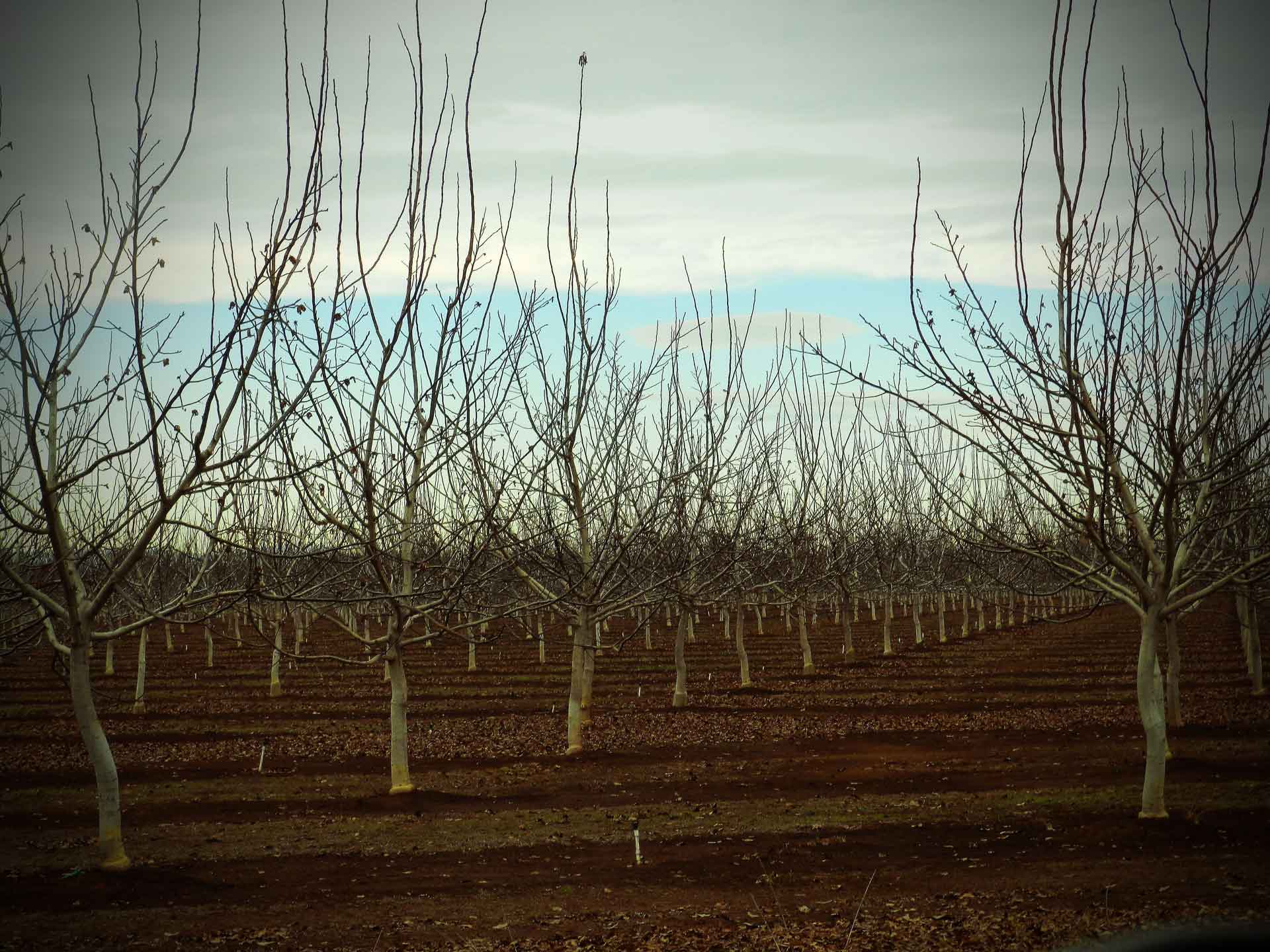Irrigation scheduling can either leave new growth vulnerable to freezing temperatures or it can help young trees withstand low temperatures. Growers must strike a balance between irrigating in early fall to push new growth or hardening off young trees to prevent damage to tender new growth.
Last year’s early freeze in November did inflict varying levels of damage in young walnut orchards that were not prepared for the low temperatures. Luke Milliron, University of California Cooperative Extension (UCCE) area sustainable orchard systems advisor in Butte, Tehama and Glenn counties said while fully dormant walnut trees are tolerant to freezing temperatures, the trees need to become acclimated to cold before a hard frees of 28 degrees F when damage is likely.
Achieving full dormancy means stopping fall growth weeks before a freeze event and managing water in the days before and after a freeze has occurred. The first step is to complete the nitrogen fertilization program by the end of August. Irrigation should cease beginning in mid September until a terminal vegetative bud has formed on the tree trunk. Once this bud has set in mid to late October, irrigation can resume if there is a need. This late irrigation can help prevent early defoliation, but should not push new growth. Moisture in the soil is a good frost protection strategy coming into the winter months as it allows for increased heat storage from radiation during the day.
Milliron recommends monitoring soil moisture and freeze prediction in November to maintain adequate moisture levels. Should a freeze occur and trees show signs of drying or browning due to damage, protection from sunburn can be provided by painting. On the southwest side of damaged trees, apply 50 percent diluted white interior latex paint. Painting after a freeze event can decrease damage, Milliron said.
Wildfires are another natural event that could damage or kill young walnut trees. Orchards adjacent to open fields or are not protected by a “green wall” of larger trees can be vulnerable during wildfires. One key management strategy is to control weeds and not leave large amounts of dry biomass near an orchard. Tall, dry weeds can act as a ladder, moving flames from orchard floor to the trees. Firebreaks around vulnerable orchards can help stop spread of flames.
Milliron said if young trees are damaged by fire or frost, pruning or removing trees is not advised. Painting and careful management of water and fertilizer the following growing season will help trees recover. By summer, latent buds pushing will determine potential for tree recovery.

Cecilia Parsons
Cecilia Parsons has lived in the Central Valley community of Ducor since 1976, covering agriculture for numerous agricultural publications over the years. She has found and nurtured many wonderful and helpful contacts in the ag community, including the UCCE advisors, allowing for news coverage that focuses on the basics of food production.
She is always on the search for new ag topics that can help growers and processors in the San Joaquin Valley improve their bottom line.
In her free time, Cecilia rides her horse, Holly in ranch versatility shows and raises registered Shetland sheep which she exhibits at county and state fairs during the summer.
















